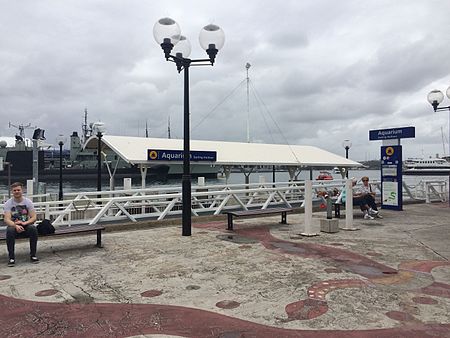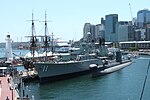Aquarium ferry wharf

Aquarium ferry wharf (also known as Darling Harbour Aquarium ferry wharf) is a commuter wharf that serves the Darling Harbour precinct as well as the Sea Life Sydney Aquarium, which is right next to the wharf. The wharf, built in the 1980s as part of an initiative to deliver transport services to the then-newly redeveloped Darling Harbour, was originally part of the Sydney Ferries network. The wharf served as the terminus of Darling Harbour ferry services, until the wharf was decommissioned by Sydney Ferries in October 2010, when services to the wharf were rerouted to King Street Wharf 3 instead. My Fast Ferry currently handles services to the wharf, which acts as a terminus for their Manly - Darling Harbour Harbour loop service.
Excerpt from the Wikipedia article Aquarium ferry wharf (License: CC BY-SA 3.0, Authors, Images).Aquarium ferry wharf
Pier 26, Sydney Sydney
Geographical coordinates (GPS) Address External links Nearby Places Show on map
Geographical coordinates (GPS)
| Latitude | Longitude |
|---|---|
| N -33.869719444444 ° | E 151.20113055556 ° |
Address
Darling Harbour, Aquarium Wharf
Pier 26
2000 Sydney, Sydney
New South Wales, Australia
Open on Google Maps










